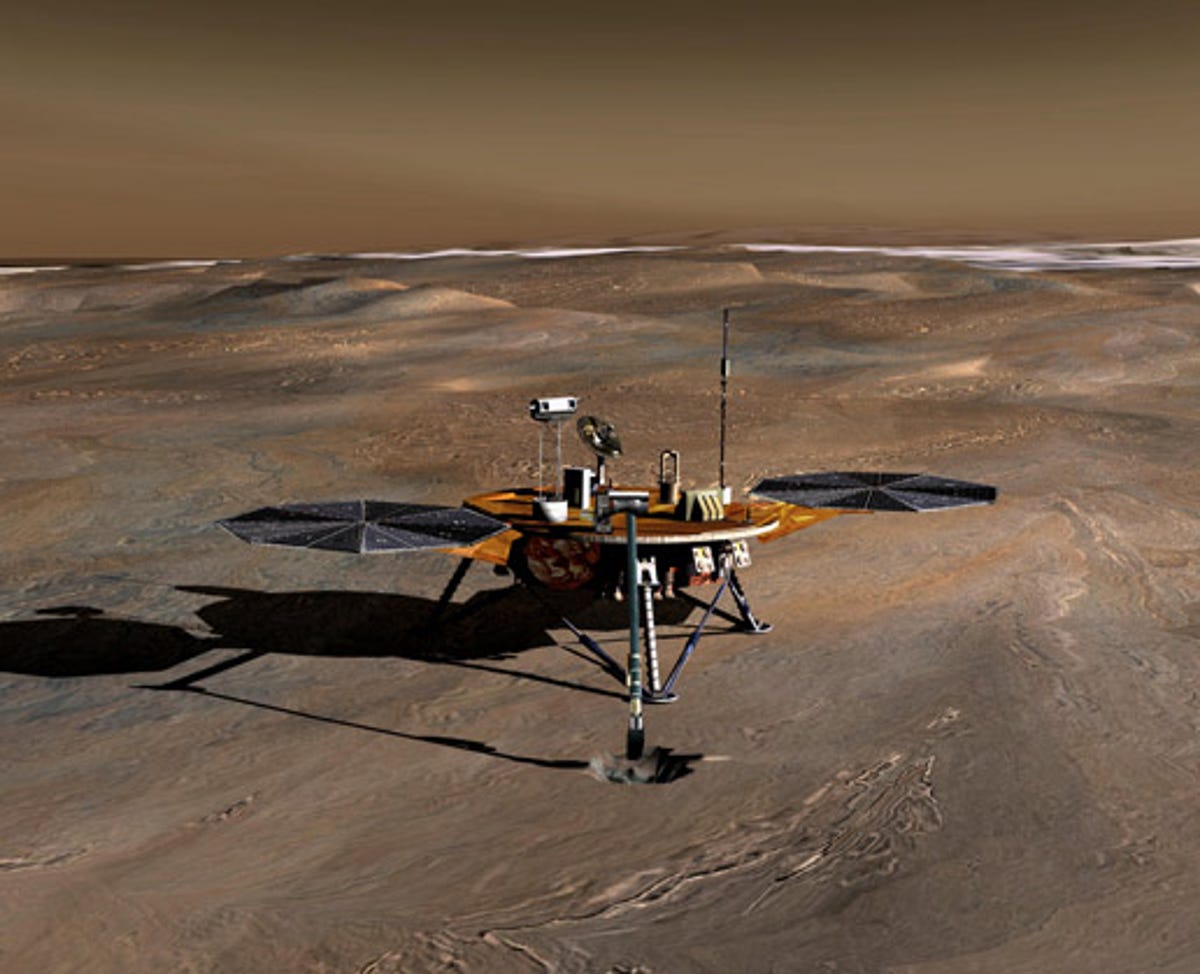Mars lander, come in please (images)
The Odyssey orbiter will listen for radio signals from the Phoenix lander, which confirmed that there's water on Mars--and which NASA hasn't heard from since November 2008.

Phoenix Mars lander
Beginning January 18, NASA's Mars Odyssey orbiter will listen for possible radio transmissions from the Phoenix Mars Lander, which hasn't been heard from since November 2008.
Phoenix completed its original three-month mission in 2008 and even extended its work two months longer than originally planned. However, the lander's hardware was not designed to survive the temperature extremes and ice-coating load of an arctic Martian winter, so any signs of life from the craft will be a welcome surprise to NASA.
Thick frost
In the summer of 2008, NASA got its big payoff from the Phoenix lander--the confirmation of water on Mars. "We have water," William Boynton of the University of Arizona, lead scientist for Phoenix's Thermal and Evolved-Gas Analyzer, said at the time. "We've seen evidence for this water ice before in observations by the Mars Odyssey orbiter and in disappearing chunks observed by Phoenix last month, but this is the first time Martian water has been touched and tasted."
A 30 centimeter-thick layer of carbon dioxide frost that has blanketed the lander and its surrounding terrain throughout the winter is now thawing. This image, taken on January 6, 2010, by the High Resolution Imaging Science Experiment (HiRISE) camera on NASA's Mars Reconnaissance Orbiter, shows the Phoenix lander emerging from the seasonal frost.
Phoenix lander site
The Odyssey orbiter will pass over the Phoenix landing site approximately 10 times each day during three days this month, and it will conduct two longer listening campaigns in February and March.
But hopes are dim. Chad Edwards, chief telecommunications engineer for the Mars Exploration Program at NASA's Jet Propulsion Laboratory, said, "We do not expect Phoenix to have survived, and therefore do not expect to hear from it. However, if Phoenix is transmitting, Odyssey will hear it."
In this HiRISE image taken during the previous Martian summer, we can clearly see the three main pieces of hardware at the landing site before the winter frosts set in.
At the top is the parachute attached with strings to the backshell, which slowed the craft's descent. The dark dot near the lower left is the heat shield that protected the lander during its descent. The lander itself is seen near the bottom, with its solar panels now fully extended to power its science operations.
Martian Plain in Late Summer
A rock named 'Winkies'
This snapshot was taken by the lander's Surface Stereo Imager camera on Sol 151 of the mission (October 27, 2008), and is among the last from the lander before its final communication about a week later, on November 2, 2008.
In the foreground of the false color image is a rock with the less winsome name of Quadlings. Temperature readings on Sol 151 were bracing--a daytime high of minus 50 degrees Fahrenheit and an overnight low of minus 128F.
Lidar readout of Martian cloud
The streaks are curved, as the winds are faster at about 3 kilometers (almost 2 miles) than at higher altitudes. Scientists are able to determine that the snow is water-based and not carbon dioxide snow, since temperatures on Mars are currently too warm to support the latter."
Surface Stereo Imager camera
Thermal and Electrical Conductivity Probe
Phoenix Deck after Sample Deliveries
After digging into the Martian soil and collecting samples, Phoenix placed the soil onto the Thermal and Evolved-Gas Analyzer, seen in the center of this mosaic of images. On the left is an instrument used for microscopy, electrochemistry, and conductivity analysis.

